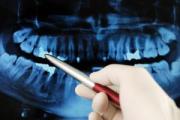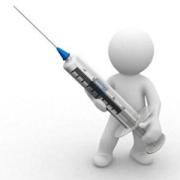Dos and donts at pregnancy
Pregnancy and Your Oral Health
There are two common myths about pregnancy and teeth:
“You lose a tooth for every pregnancy you have.”
“If you don’t get enough calcium during your pregnancy, your body takes it from your teeth.”
Neither one is true. However, tooth decay and gum disease are still a concern during pregnancy.
If you are pregnant or thinking about becoming pregnant, now is the time to pay particular attention to your teeth and gums. That’s because pregnancy–and the changing hormone levels that occur with it–can exaggerate some dental problems.
Taking good care of your mouth is important not just for your own sake, but also for the fetus. Some research suggests that serious gum disease, called periodontitis, is linked to premature birth and low birth weight.
Cavities
It‘s tooth decay-not pregnancy-that can cause tooth loss. Tooth decay results from repeated acid attacks on tooth enamel. The decay process begins with plaque, the sticky layer of harmful bacteria that constantly forms on teeth. The bacteria use sugar and starch, ingredients found in most foods and beverages, to produce damaging acids.
Each time teeth are exposed to sugar or starch, acids can attack tooth enamel for up to 20 minutes. If you snack on sugar-rich foods and beverages throughout the day, your teeth could be exposed to acid for long periods.
To help prevent tooth decay, brush twice a day with fluoride toothpaste that displays the American Dental Association’s Seal of Acceptance. The Seal means the product has met the ADA’s criteria for safety and effectiveness.
Floss, or use another interdental cleaner, once a day to remove debris from between the teeth. If you need help controlling plaque, your dentist may recommend an antimicrobial mouthrinse.
Gingivitis
Plaque that remains on your teeth can irritate the gums, making them red, tender, and likely to bleed. This condition is called gingivitis and can lead to more serious periodontal (gum) diseases affecting the gums and bone that anchor teeth in place.
Many women who previously had healthy teeth and gums, may notice that their gums become swollen, inflamed or bleed during their pregnancy. This condition is sometimes called “pregnancy gingivitis.” It may appear as early as the first trimester and is the result of changing hormone levels including increased amounts of progesterone.
An increase in hormones exaggerates the way gum tissues react to irritants in plaque. It’s the plaque, however, not hormone levels, that is the major cause of gum disease.
You can prevent gingivitis by keeping your teeth clean, especially around the gumline. Your dentist may recommend more frequent cleanings during your second or early third trimester to help control gingivitis. If you notice any changes in your mouth during pregnancy, see your dentist.
A dental checkup
If you are not yet pregnant, schedule a dental checkup. Have your teeth cleaned and schedule any necessary treatment. This can help reduce the risk of having a dental emergency during your pregnancy.
If you are already pregnant or suspect that you might be, let your dental office know. Tell your dentist if there is any change in your health, any change in the medications you take or any particular advice your physician has provided. This information will help your dentist determine the best time for treatment and whether to modify your treatment plan to better suit your needs and the baby’s health. Your dentist may also talk with your obstetrician to coordinate treatment plans.
Continue regular dental visits throughout your pregnancy. Non-emergency treatment generally can be performed safely during this time. However, you may be advised to avoid elective treatment during the first three months of the pregnancy. If you have a history of miscarriage, an elevated risk to miscarry, or if you have some other medical condition, your dentist may recommend that treatment be postponed.
During the last months of pregnancy, it may be uncomfortable sitting in the dental chair for extended periods. If you have a history of premature delivery, you should avoid receiving treatment during this time. For your peace of mind and comfort, the fourth through sixth months of pregnancy are usually the best time for necessary dental treatment.
Drugs
Some drugs and anesthetics can be used during and after dental treatment to make you more comfortable. Inform your dentist of any prescription or over-the-counter drug you are taking. This will help your dentist determine what type of drug, if any, will be prescribed during or after treatment.
Your dentist can consult with your physician to determine the drugs-such as painkillers or antibiotics–you may safely take during the pregnancy and dental treatment. Discuss any concerns with your dentist and physician. Both are concerned about you and your unborn child.
 X-rays
X-rays
An x-ray may be needed for dental treatment or a dental emergency that can’t wait until after the baby is born. Radiation from dental x-rays is extremely low. A leaded apron minimizes exposure to the abdomen.
Wise food choices
Strive for a nutritious, well-balanced diet. When you need a snack, choose foods that are nutritious for your and your baby.
What you eat during your pregnancy affects the development of the fetus, including the teeth. A baby’s teeth begin to develop between the third and six months of the pregnancy. A sufficient quantity of nutrients-especially vitamins A, C, and D, protein, calcium and phosphorous-are needed.
The calcium your baby needs is provided by your diet, not your teeth. If dietary calcium is inadequate, however, your body provides this mineral from stores in your bones. Dairy products are the primary source of calcium. Your obstetrician may recommend calcium supplements as well.
 What to do and what not to do during pregnancy?
What to do and what not to do during pregnancy?
- Although it is advised for many medications not to be used or used with strict control there has been no paper published for the local anesthetics to have a side affect.
- The local anesthetics have to be administered according to the manufacturers recommendations.
- If there is no restriction there is no risk to use local anesthetics.
- Under local anesthetics the patient will not have pain and the stress factor will be mostly eliminated
- Also extractions or other interventions can be performed according to general principles of medicine applied to pegnants and with the recommendations of the local anesthetic manufacturer.
- Antibiotics such as penicilin and its derivatives (amoxiciline) if necessary are indicated with the recommendations of the obstetrician and will not harm the baby
- Tetracyclines are not allowed to be taken,since this group of antibiotics may cause somediscolorations due to tetracyline
- Taking painkillers require also strictly following the recommendations of the manufacturers.
- Although the dose of x-ray taked with a dental radiograph is very low it should be avoided to have radiographic exams in pregnancy .
- If not urgent it has to be done after the labor.
- If it has to be taken then an a protective apron has to be worn and low dose with high speed films have to be used.
Pregnancy and Your Oral Health
Simple Steps for a Healthy Mouth
- Brush thoroughly with an ADA-accepted fluoride toothpaste twice a day.
- Floss, or use another interdental cleaner, between your teeth once a day.
- Purchase products that have the ADA Seal of Acceptance.
- Eat a balanced diet. If you snack, do so in moderation.
Schedule regular dental checkups and periodic professional teeth cleaning
Tell Your Dentist
- If you have a high-risk pregnancy.
- The month of pregnancy you are in.
- Any changes in your oral health.
- If you are taking any medication.
- If you have noticed any swelling, redness, bleeding, sores or inflammation in your mouth.
- If you have noticed any loose teeth.
